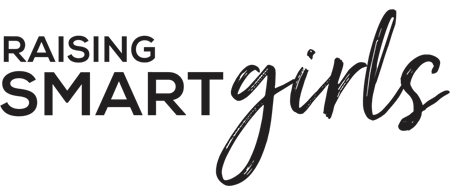A Conversation with Erin Tarr, mom to three smart girls and founder of Be The Benchmark
Join us in a conversation about goal-setting with Erin Tarr, mom to three smart girls ages three, eight, and 10, and the founder and head coach at Be the Benchmark, an organization that helps girls and young women make better life decisions and grow in confidence by developing great relationships with themselves and their community.
Q: Should you set goals for and with your child? At what age should you start?
A: I believe that we should set goals with our children. I have been talking about goal setting with my kids since they could talk, literally that young. For me, it is about helping them have a positive and accurate view of how their thoughts, words, and actions can impact their well-being and life.
Q: As you know, we serve three age groups: pre-school (3 – 5), school-age (6 – 9), and pre-teen (10 – 12). So let’s start with pre-school. How do you set goals with kids that young?
A: So for my preschooler, I focus on waking hours goals. By that, I mean that it is best to set goals that last just for the day or until the next time she sleeps. If we wake up in the morning, and we want to work on something during that day, I try to chunk it down to a specific action. For example, when we were potty training, I would say, “Let’s try to work on going to the bathroom three times before lunch.” Other examples of age-appropriate goals for this age group would be drinking more water, being more active, or making kinder decisions. But the goal attainment period has to span a short period of time, and it is important to be very specific with what actions they should try to take within a given time period.
Q: What does goal setting look like for school-age kids?
A: School-age kids can handle goals that span a couple of days or even a full week. Some examples of age-appropriate goals are, “I’m going to get my homework done first thing when I get home every night,” or “I’m going to practice my instrument five times this week.” While they can handle these types of short-term goals, they might not be able to remember on their own. It is important to be intentional with reinforcing goals with this age group. Offering gentle reminders can be very helpful.
Q: How about tweens (10-12)?
A: This is the age where I think you can start to introduce longer-term goals similar to how adults set goals. They are starting to have some independence; goal setting gives them an opportunity to own their own progress. Where a younger child might need frequent reminders, with tweens it is better to have regular check-ins, and give them the freedom to manage their own goals in between the check-ins. At check-in, your job is to listen, celebrate both wins and failures, and offer guidance when they seem to be stuck. At this age, the goal is to help your child focus on consistency in making an effort and less on the outcome.
Adults set goals.
Q: What do you do if your child becomes overwhelmed?
A: This is something that I experience with my eight year old daughter. She gets overwhelmed very quickly, and it shows up as outbursts where she goes from zero to 20 very quickly. Two tools we ask her to use are to communicate with calm words and to ask questions. Many times when kids react emotionally, it is because they don’t understand something. So we teach her to ask questions instead of freaking out.
How each child uses these tools will look different for each situation, but it is important that they are age-appropriate goals/requests that are easy for children to remember and use.
Q: So even as adults, we tend to be hard on ourselves about our goals. How do you help your child apply grace to themselves when necessary?
A: This is really important especially in the older age groups as they start to set and own their personal goals. I teach my kids to cut their goals in half and extend the timeline (thanks, Jon Acuff). We mostly think of applying grace after failure, but I think a beautiful form of grace that we should extend ourselves is in setting goals that are realistic and leave plenty of time to fail and recover.
Thank you for your wonderful insights, Erin! Please check out Be The Benchmark and follow her on Facebook and Instagram. Join the conversation by leaving a comment below!







